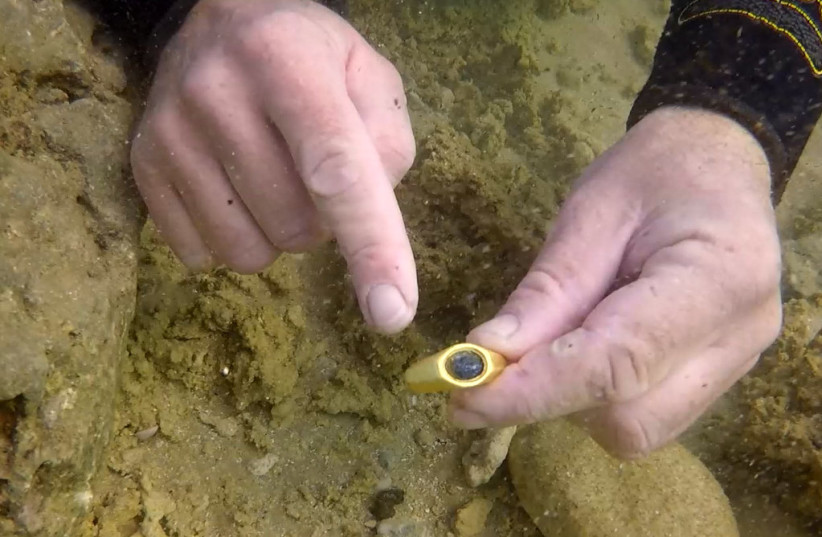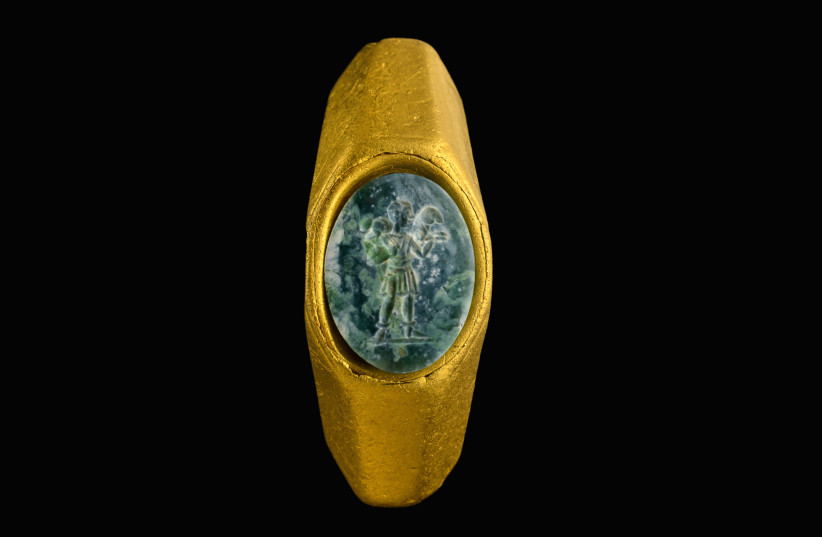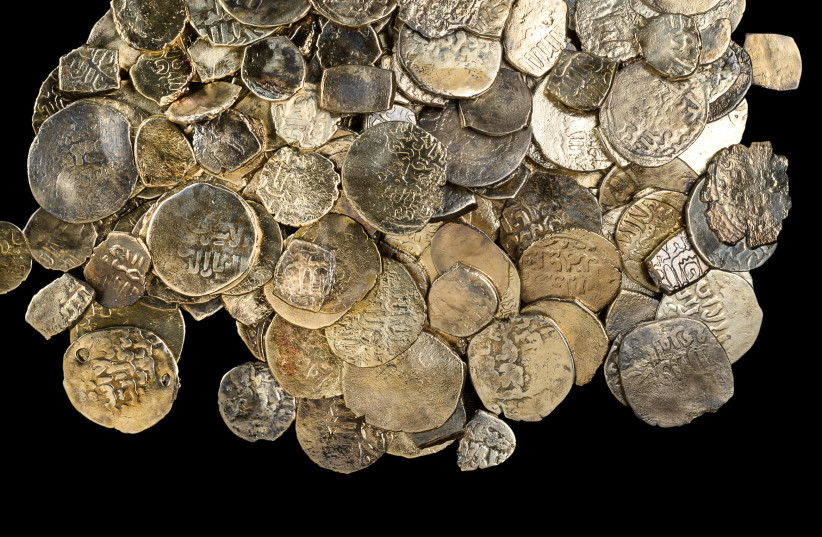Maritime archaeologists found several precious artifacts, hundreds of silver coins from two shipwrecks dating over a millennium apart in the ancient harbor.

Some time ago, a team of divers from the Antiquities Authority’s (IAA) Marine Archaeology Unit was surveying an area just outside the harbor of Caesarea, as they routinely do off the entire coast of Israel.
“We spotted a broken metal anchor and decided to see if there was more in the area,” said archaeologist Jacob Sharvit. “We soon started to find many other artifacts.”
That diving led to the discovery of an incredible underwater treasure, from two ancient ships dating back to the third and 14th centuries CE that wrecked in the same spot just meters off the coast – over 1,000 years apart, as the IAA revealed Wednesday. The treasures included hundreds of coins and some unique jewelry.
First established in the fourth century BCE, in the first century, Caesarea was selected by Herod to build a port city. The city remained an important center throughout the Roman and Byzantine times.
The artifacts from the Roman period included silver and bronze coins – which allowed the expert to date the findings – a precious gemstone with a lyre carved on the surface, bronze bells, an eagle figurine, symbol of the Roman rule, another figurine shaped like a dancer wearing a comic mask, and pottery vessels.

“We were surprised by the quantity of bells we uncovered,” said Sharvit. “It is possible that the sailors used them to fish with fish nets during the night, or maybe they were part of the cargo and were goods to sell.”
“I am the good shepherd,” reads a verse in John. “The good shepherd lays down his life for the sheep.”
“We know that similar images were found in the Christian catacombs in Rome,” said Helena Sokolov, a curator at the IAA Coin Department.
Caesarea was home to an important early Christian community and it is mentioned several times in the New Testament.

Among others, the Roman centurion Cornelius is said to have been baptized here by the apostle Peter (Acts 10:10).
“This was the first instance of a non-Jew being accepted into the Christian community,” said Sharvit. “From here, the Christian religion began to be disseminated across the world.”
The more modern ship was carrying a hoard of about 560 silver coins from the Mamluk period.
“At the time, Caesarea was not an important center anymore,” Sharvit noted. “The Mamluks did not really have ships or a fleet, and they were worried that the Europeans would come to wage war from the sea, so they destroyed many ports.”
